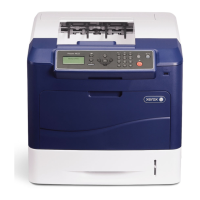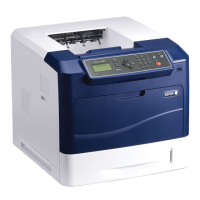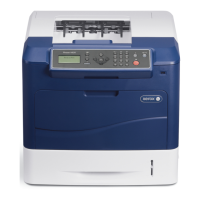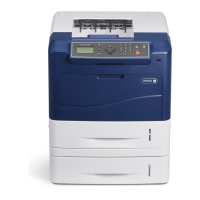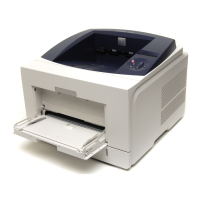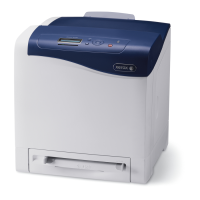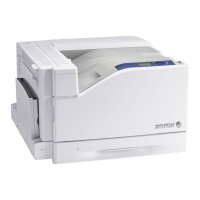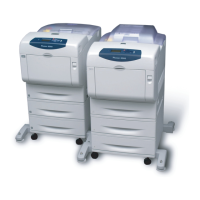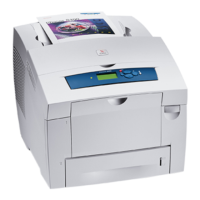Phaser 4500/4510 Service Manual 2-21
Theory of Operation
Fuser
Heat roller The heat roller is a metal tube with a coated surface and a heater
assembly inside. As paper passes between the heat roller and pressure roller,
the heat that is applied to the paper melts the toner and fuses it to the paper.
Pressure roller The pressure roller is a metal shaft coated with sponge rubber.
It maintains pressure on the paper passing between it and the heat roller. This
pressure presses the melted toner against the paper.
Heater assembly
The heater assembly consists of two halogen lamps located in the heat roller.
One lamp heats the entire length of heat roller, while the other, shorter rod
heats the center. The lamps are controlled by switching the neutral side of the
power to each lamp; the lamps use a common hot line.
Temperature sensors These are Soft Touch Sensors (STS) having a known
value of resistance that varies with temperature. There are two temperature
sensors in the fuser. One is located at the center of heat roller, the other is
located where the edge of a letter size sheet of paper comes through. The
sensors monitor the temperature of each location to control lighting of the
heater rods. The sensors are mounted in contact with the surface of the heat
roller. Power to the heater rod is turned on and off using the signals from
these sensors, so that the surface temperature of the heat roller can be
maintained within a specified range. These signals are also used to provide a
first stage of overheat protection.
Thermostats The thermostats are connected in series with the heat roller
assembly, and provide a second level of overheat protection. If the first stage
of overheat protection does not prevent the fuser from overheating, the
thermostats cut off the power-supply circuit for the heater rod. If the paper
type is set incorrectly, the pressure roller may melt and adhere. As a
countermeasure against this, if the STS detect the higher temperature, but
can not prevent the overheat, the thermostats cut power to prevent the
pressure roller from melting and adhering.
o
e
The fuser in the Phaser 4510 uses a single thermostat switch instead of
two to perform the same function.
Heat roller fingers These fingers peel off the leading edge of the paper from
the Heat roller to prevent the paper from getting wound around the heat roller.
Heat roller diode The negative charge accumulated on the heat roller may
deteriorate the toner image on the paper during fixing. The heat roller diode
discharges the charge to the frame ground.
Exit sensor This sensor detects the arrival of the paper at a detection point in
the exit area positioned behind the fuser. This sensor also detects the
discharge of the paper from this point. When the sensor receives light (i.e.,
paper is present), the signal /EXIT is low.
